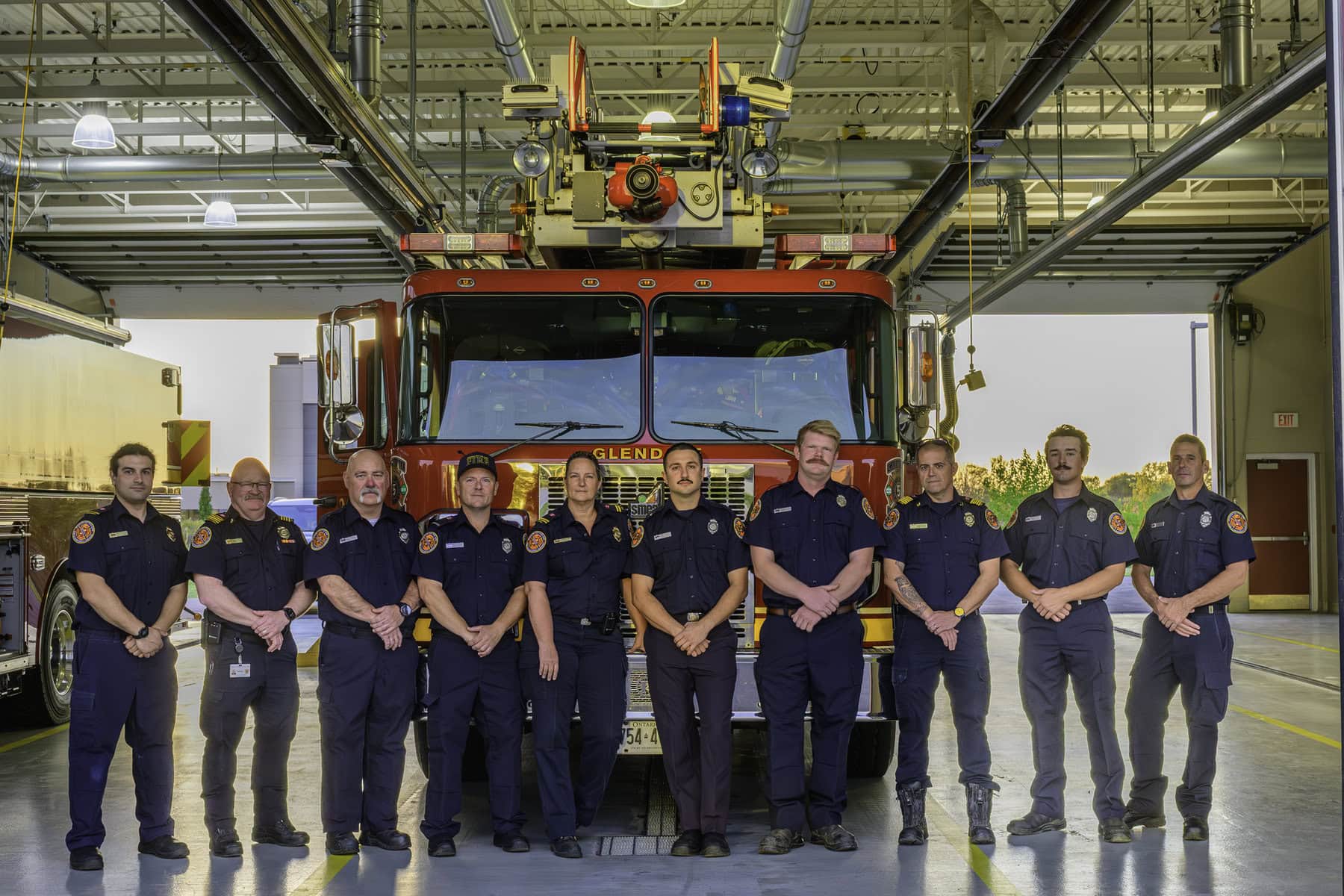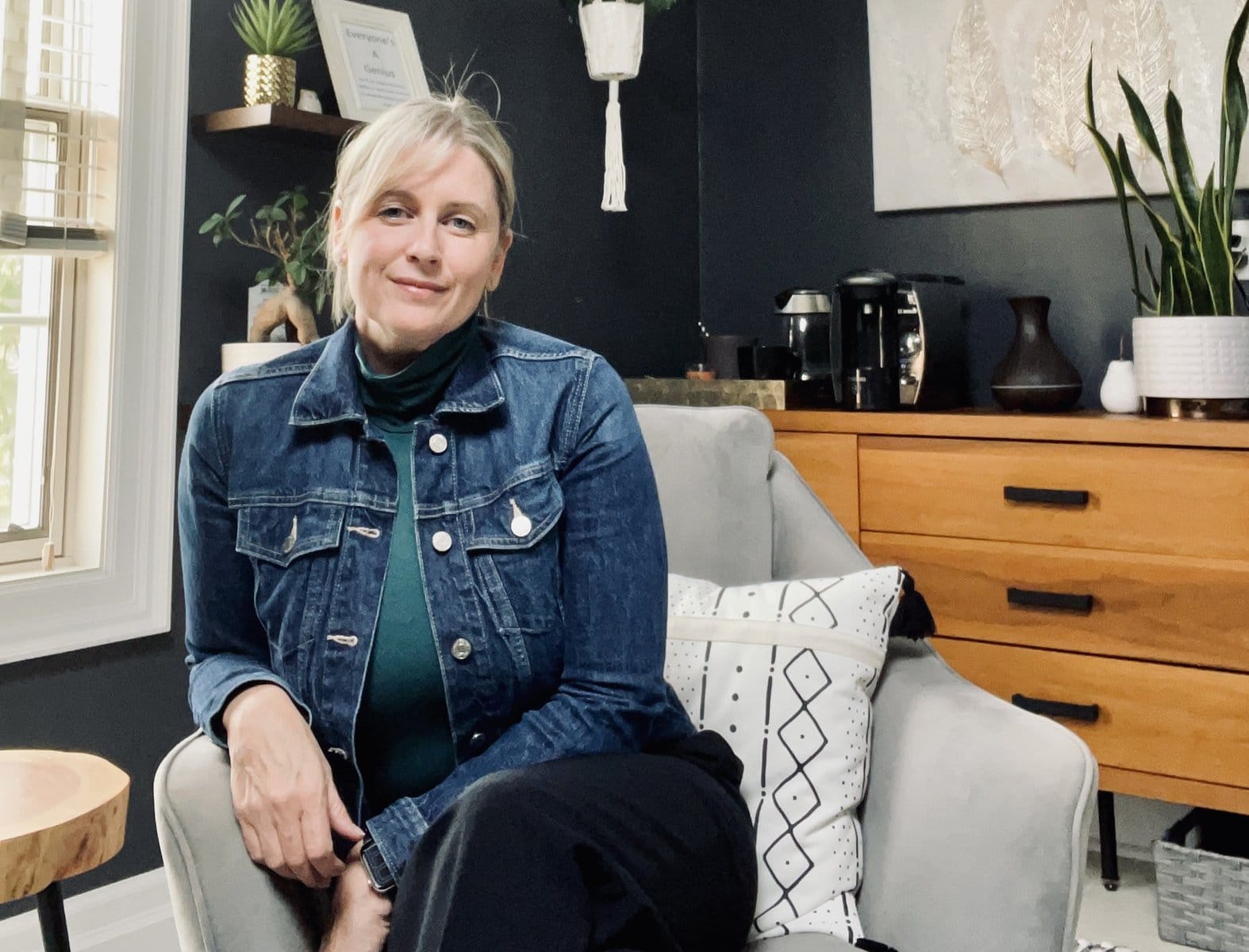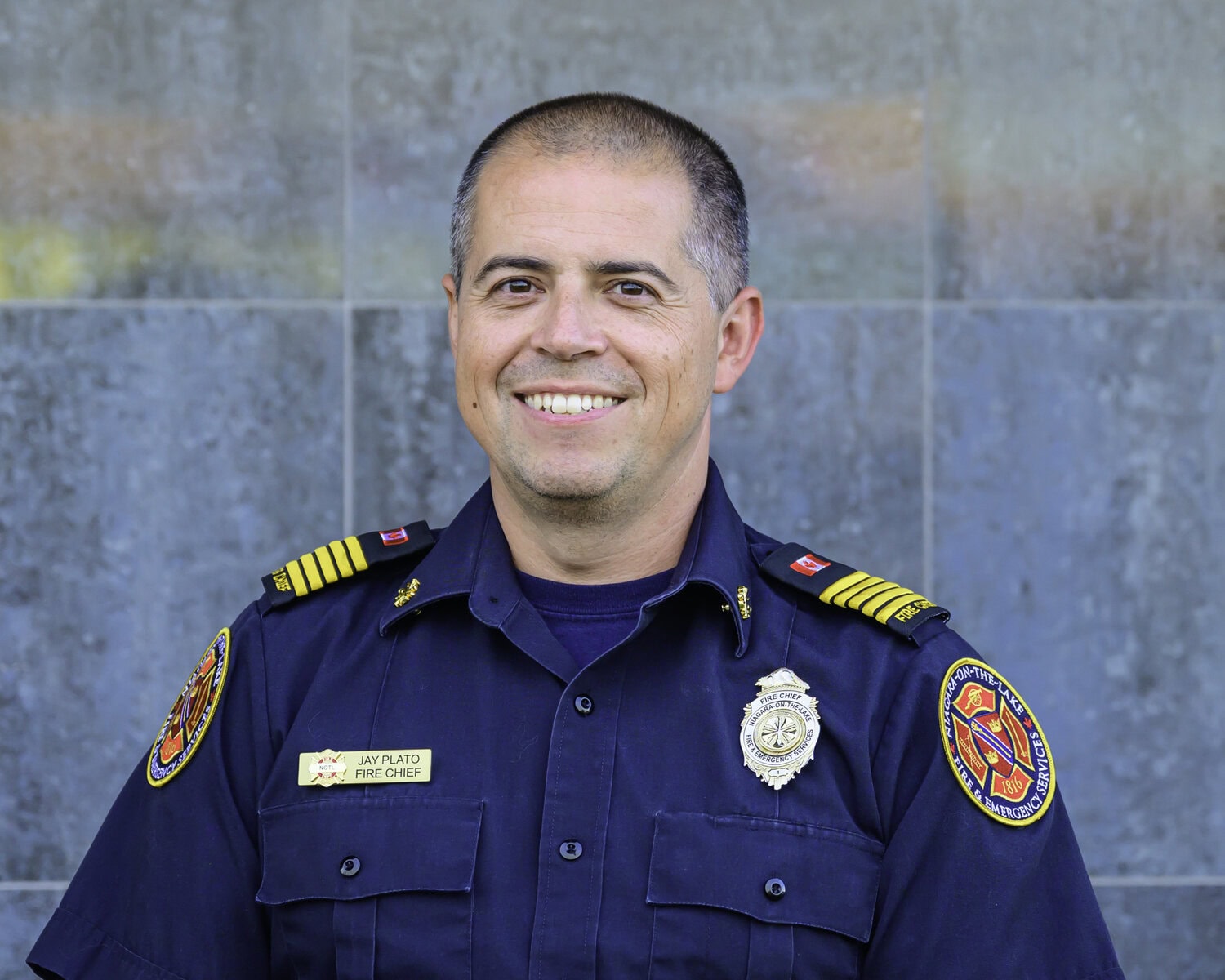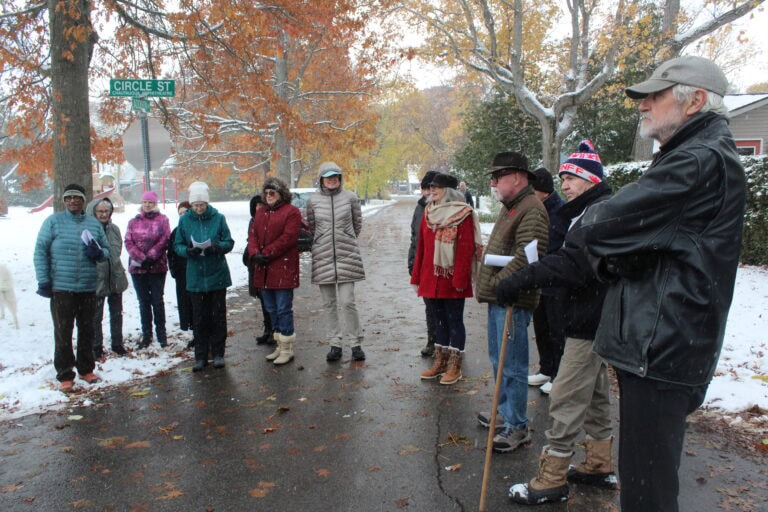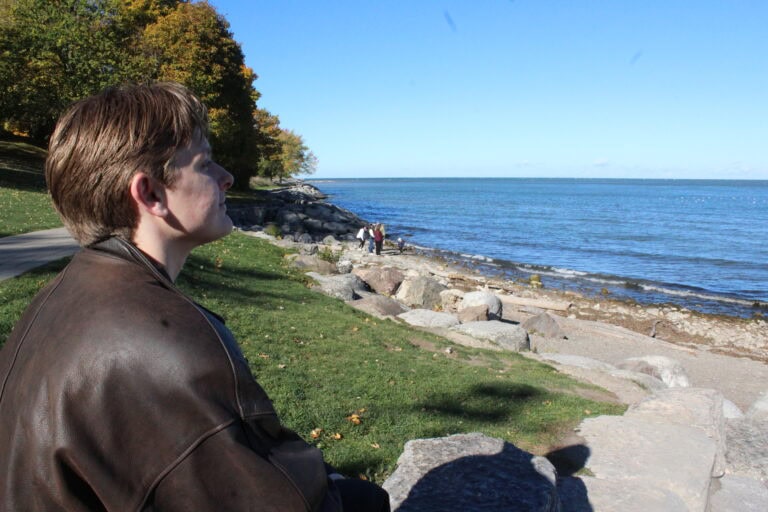Every job comes with an industry that operates in its own little world — its own history, codes of conduct, language and experiences that are distinctive to the profession.
For Kelli Nicholson, whether you’re a police officer, a firefighter or a paramedic, being the first on the scene of an emergency forges realities that only other first responders know well.
Some niche experiences are benign, like being able to speak with ease in 10-codes and the phonetic alphabet, or having a unique sense of humour.
However, some incidents are far more difficult, whether it’s a fatal car crash, a senior having a medical emergency, a house fire in your community or trauma involving a child.
That reality hit home this summer.
Niagara-on-the-Lake firefighters were among the first on the scene in the early hours of Monday, July 21, when three young people driving on Queenston Road died after their vehicle struck a tree and burst into flames.
All three young men, two of them Brock University students, were pronounced dead at the scene. They all died inside the flaming vehicle, burned beyond recognition.
Having an organized debriefing afterward was invaluable, Fire Chief Jay Plato says. It hasn’t always been that way, however.
Many first responders know exactly “what it’s like to sit with a dead body, or what it’s like to have a really traumatic experience and not be able to talk to your spouse about it,” Nicholson says.
As a constable with Niagara Regional Police for 10 years, she went through it firsthand.
“I didn’t go home and tell my parents about the horrible things that I had seen.”
The problem was, when she started as a police officer in 2009, there wasn’t a lot of education, or “buy-in,” on how to actually deal with these traumatic incidents on a personal level, she says.
“The culture still predominantly — and, really, social norms — told first responders that you are weak if you have emotions.”
In 2014, Nicholson went back to school to complete a master’s in social work at the University of Windsor. Today, while she’s in a different line of work, she’s still confronting this reality among emergency responders — and is working hard to change that culture.
She’s a clinical therapist and founder of Lifeline for the Frontline, a counselling service based in St. Catharines for first responders in the Niagara area — including, for the past year, the volunteer firefighters who serve Niagara-on-the-Lake Fire and Emergency Services.
Not acknowledging one’s feelings after a traumatic event can have consequences, she says.
If someone is experiencing post-traumatic stress and it’s not dealt with, after a month, they can be diagnosed with post-traumatic stress disorder, she notes.
For first responders, who are vicariously experiencing other people’s tragedies and “often in the line of fire,” trauma is a hazard of the work they engage in, she says.
And that trauma can be very real.
Nicholson notes studies have shown 49 per cent of paramedics and 48 per cent of 911 operators report experiencing a mental health problem such as PTSD, depression or anxiety.
As well, 34 per cent of firefighters report significant mental health challenges, while police and first responders experience significantly higher rates of PTSD, depression and anxiety than civilians.
In a 2025 report on PTSD’s impact on Canada’s workforce, the federal government says first responders and other public safety personnel are at an increased risk for PTSD and other mental health conditions because of “repeated (and often routine) exposure to dangerous or life-threatening events.”
Nicholson notes this all can have a ripple effect, coming up in a person’s interactions with their colleagues, friends and family.
“It infiltrates into all the parts of your life.”
Her work now is part of an effort by NOTL’s fire department to help its crews cope with the toll that their work can inflict.
“The entire profession and the entire concept is to show up when someone is typically in their worst moments,” says Plato.
Last year, NOTL Fire received and responded to 761 calls for service, including 59 fires, 135 medical calls and 126 auto collisions. That’s an average of almost one serious situation every day.
By its nature, the profession has highs and lows — when responders are able to help the people they encounter, it’s a good feeling, Plato says.
“On the flipside, there are times when you aren’t able to assist. That weighs heavily on the mind afterwards.”
Based on Plato’s eight years of experience with the fire department and conversations with volunteers who have been in the job for longer, talking about mental health was not commonplace even a few years ago.
“It clearly wasn’t something that was talked about in any field. It wasn’t as prevalent,” he says. “Across the board, we’ve really stepped up.”
Today, things are different.
The mental and emotional impacts of the work first responders do daily are very front-of-mind for him, Plato says.
It’s a unique situation for NOTL’s fire crews, he adds, because they’re not full-time firefighters. They all have lives or jobs outside of their role as volunteers.
Full-timers, at the end of the day, have the option of taking time off to recuperate after a call.
While volunteers have some support from the department, Plato says, “they still have a daytime job. They still have something they need to go to that day. They still have their family at home that they left.”
So, the department decided to bring on someone who could help create a formal wellness program that allows volunteers to be taken care of — and to take care of themselves.
Enter, Nicholson.
She says Lifeline for the Frontline’s work is structured with five pillars: education, building resilience, critical incident response, follow-up and ongoing wellness.
As part of her collaboration with NOTL Fire, she’s led workshops for volunteers, including new recruits, to educate them on emotions and self-awareness.
She says it’s important for people to recognize that having emotions is a normal part of daily life — understanding this allows people to feel less weak.
“I say to my clients all the time, ‘You have emotions throughout every single part of the day,’ ” she says.
“It’s only when those emotions get really, really big that we’re like, ‘Oh, I’m having a big feeling right now.’ ”
For first responders, that’s why tools like critical incident debriefs among team members after a potentially traumatic event are important.
“It allows people to return back to what happened and revisit that and allow them to be more self-aware about what emotions are coming up for them.”
After the horrific crash on Queenston Road this summer, NOTL firefighters arrived at the scene about 3 a.m., Plato says, and were on hand for an hour.
That night, at the District 5 Fire Station in Glendale, those who responded to the crash gathered to talk about what they’d just gone through, along with some other volunteers who were there for the department’s training night.
Plato says he reached out to Nicholson to have a representative from Lifeline for the Frontline to lead the debrief.
Since Nicholson was away at the time, Daultan Leveille, a registered therapist and firefighter from St. Catharines, responded. Plato said the conversation was led by its participants, with Leveille guiding people to share how they’re feeling along the way.
During that debrief, Plato says he focused on telling the volunteers that their emotions were valid and that they shouldn’t be ashamed of what they were feeling in the moment.
Plato compared the process to therapy and said it was a place where bonds were built between everyone in the room.
“Leaving there, everybody felt good about the fact that we were just able to talk about it and that we were able to come together as a group and ensure everybody was feeling OK.”
Such sessions are helpful, he says — it means a lot to hear someone say exactly what you are thinking and feeling in the moment.
“It’s nice to hear you’re not alone.”
Since Plato started with the department in 2017, he says there’s been an uptick in discussions around mental health.
“It continues to become more prevalent.”
Part of that changing culture may come from the next generation of volunteer firefighters.
Many of the fire department’s new recruits are in their 20s and with that comes a greater familiarity with talking about mental health, compared to decades prior, when mental health simply wasn’t discussed, he says.
“They’re more open to the idea of talking about it.”
Regardless of the difficulties that come with opening up, Plato says he tries to reassure the people he works with that what they encounter in their work isn’t something they need to brush off — because it’s not what people see in their everyday lives.
“So talk about it, if you need to. It’s OK to talk about it.”



